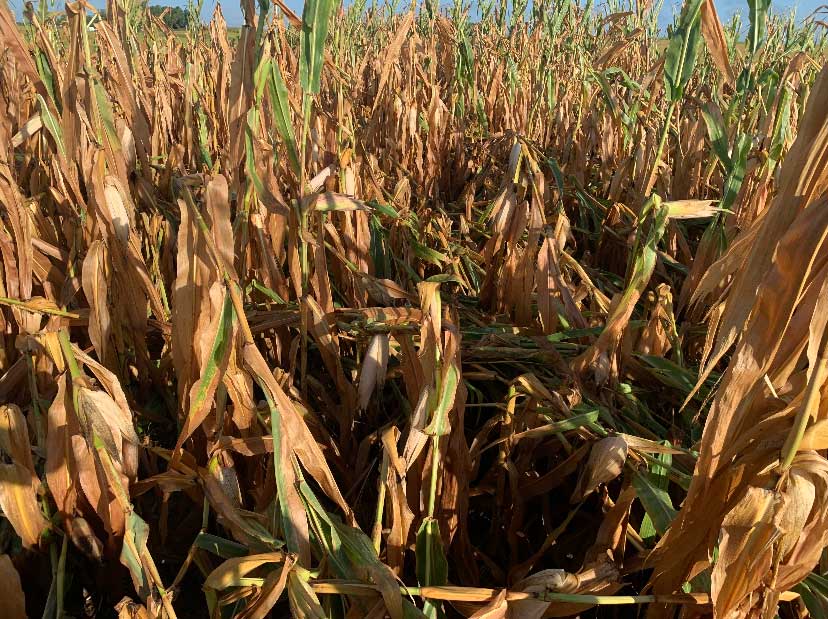Prioritizing Drought-Stressed Corn for Early Harvest
Much of the dryland corn crop in the Hoegemeyer footprint has been exposed to drought sometime during the 2021 growing season. Depending on when this drought hit the corn crop, and how long it persisted, many producers will face a challenging harvest on these drought-stricken acres. Prioritizing these drought-stricken acres for an early harvest will help reduce harvest losses from both lodging and ear drop.
Stalk rot diseases including Charcoal rot, Fusarium, Gibberella, and Anthracnose in drought-stressed corn are typically are the main culprit in stalk lodging, but a number of other factors listed below also affect a plants ability to withstand stalk lodging and disease.

8-27-2021
-Hybrid disease tolerance: All Hoegemeyer hybrids are rated for stalk rot diseases as well as foliar leaf diseases. The healthier the disease package a hybrid has, the better chance the hybrid will stand. Hoegemeyer rates products for disease on a scale from 3 to 7 with 7 being the most resistant.
-Poor root growth from poor planting conditions: Sidewall compaction, cold waterlogged soil early in the growing season, and drought stress can cause plants to produce a small root system that can make plants more susceptible to lodging. If you have a field or two that got a less than ideal start due to weather conditions around planting, prioritize that field for harvest. With a reduction in root biomass, the plant will take up less nutrients and moisture throughout the growing season. This can cause the plant to take those nutrients needed to fill the ear from the lower stalk, essentially cannibalizing itself, and make those plants more susceptible to lodging.
-High plant populations: High plant populations can really push yields in the good year but will make stalks thinner, weaker and more susceptible to stalk lodging. Prioritize fields with higher populations for early harvest.
-Nutrient imbalances/deficiencies: Plants that do not have proper nutrition will be predisposed to stalk lodging issues. Plants that are deficient in nitrogen, sulfur and potassium will be more susceptible to lodging issues. Take time this fall to assess your fertility program and make sure the plant has what it needs to help yields and standability in the growing season to come.
If you have fields where pre-mature death occurred in your corn prioritize those fields for early harvest to reduce harvest losses from stalk lodging and ear drop. If you have any questions, feel free to call your local Hoegemeyer DSM or Agronomist to help diagnose what disease is affecting your field and what we can change to help your operation achieve higher yields.
